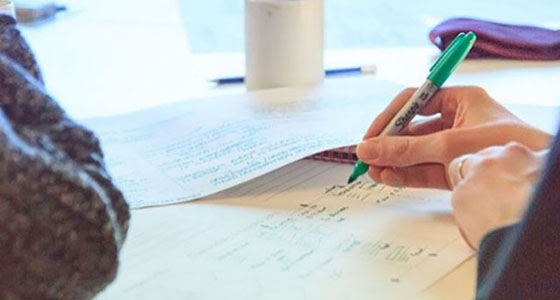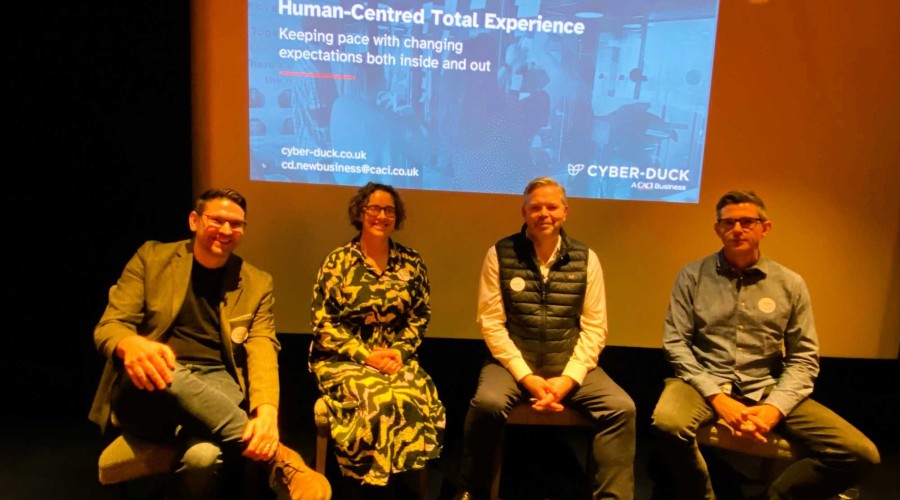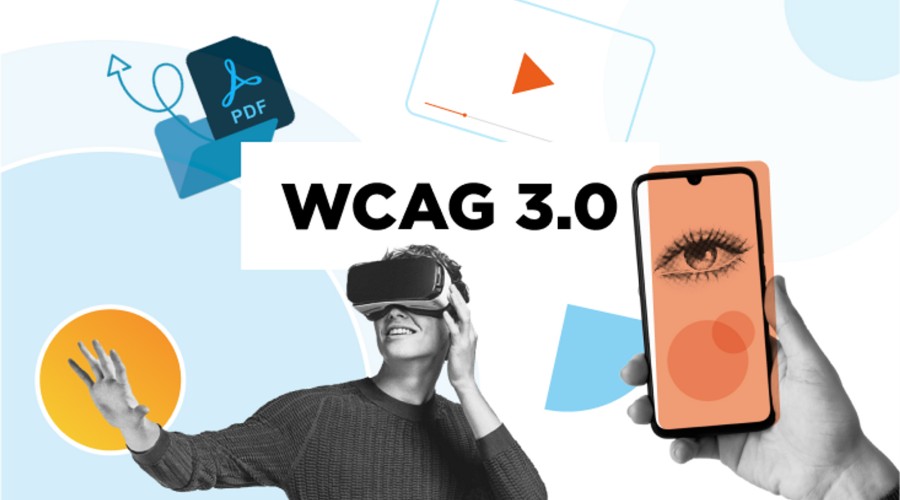I spoke about Evil UX at the latest Digital Pond event, Empathy in Design, but there’s even more opportunities to promote empathy in your designs out there. I’ll be exploring just a handful of those today, as well as a quick run-down of Evil UX.
What is empathy? Many people often confuse empathy with sympathy, but the two aren’t the same thing – far from it, in fact. Sympathy is the act of understanding a person's perspective, but empathy goes further: it is the identification of and experience of feeling the emotions of another. It’s the identification part that’s key. The object and the subject never become one, but they can understand one another.
Empathy is all about convergence, whereas sympathy is experienced from more of a distance. It’s because of this that empathy is of the utmost importance for designers; with empathy, you can identify the problems your users might face and provide practical solutions from a designer’s perspective.
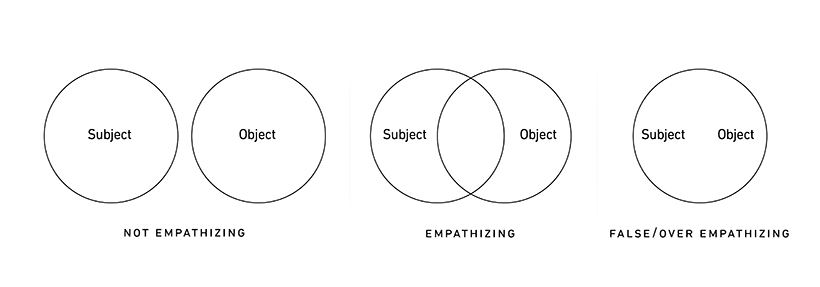
The difference between empathising, maintain distance and over-empathising. [Img credit: UX Magazine]
But how can you promote empathy in your designs? Here, I’ll be running you through some of the ways we promote empathy among our designers and with our clients in workshops.
Evil UX
At the latest Digital Pond, my talk was centred on a favoured workshop exercise of mine: Evil UX. I believe that thinking like an evil genius can lead to better and more successful experiences for our users, and here I’ll briefly show you why.
I’ll start by assessing the brainstorm. The traditional thinking of brainstorms is that no idea is a bad idea, with a brainstorm’s real aim being to generate as many ideas as possible. But let’s face it, there is such a thing as a bad idea, and having to sift through all your bad ideas to find the one good one is a chore you don’t need.
Similarly, in a brainstorm you’ll also find the most creative people, usually designers, dominating the discussion. But to truly succeed you need to get all your stakeholders on board, so you need to get creative with your workshops.
Therefore, it’s time to tap into your inner supervillain and think specifically about bad ideas. Turn the brainstorm on its head, and instead of searching for the one true good idea, ask yourself the following:
- What’s the worst thing we could do for our users?
- How could we make the user experience so bad that they moan about us on Twitter?
- How could we make this product absolutely dreadful?
This is an unconventional process, sure, but what’s important is that it works.
Why?
Firstly, there are no barriers to entry with this approach – everyone in the group can contribute a terrible, dastardly idea. Secondly, it’s actually pretty fun; as John Cleese notes, ‘humour is an essential part of spontaneity’, without which we may not be as creative with our solutions, so have fun with your bad ideas. Likewise, there’s always opportunities to make things even worse, meaning you’ll never run out of ideas during these sessions.
But above all, coming up with these bad ideas demands that your group empathises with the user. You must think about how your users will react to a truly awful idea, and to do so you need to put yourself in the shoes of your users.
In this way, you can help your stakeholders to identify why your users might be unhappy, or resolve an internal conflict about the right design choice to make. It’s also a great way to get out of a creative rut, the proverbial writer’s block!
During stakeholder interviews and workshops, Evil UX is just one of many ways we encourage participants to think outside of the box.
Once you have your evil ideas, you can flip them round and turn the bad into good. Ask the group to reflect and consider each awful idea and to identify what makes that idea so terrible. Once you’ve pinned down an evil idea, you can start working to ensure you avoid that pitfall in your final design.
First, you would identify what the opposite of your evil idea is, its positive quality. For instance, ‘making the text so small it’s impossible to read’ would be flipped to good accessibility, painfully slow loading times to fast page response times, and so on. Armed with your list of positive qualities, you can then work out how to make them a reality and turn the poor user experience into a good one.
If we plot these good ideas for each attribute in a user journey out in a sequential timeline, we can map out the opposite of the evil user experience we created earlier.
In an Evil UX workshop, teams can let loose and generate some hard-hitting, original and positive ideas. They can create the types of journeys that would make users happier, more likely to return and more likely to share their positive experience with others.
Stinky Fish
Another excellent empathy-building workshop technique for building alignment between stakeholders is Stinky Fish. Don’t worry, you won’t have to handle a putrid Catch of the Day! The fish is metaphorical: it represents the things you might carry around but don’t want to talk about, even though the longer you hide them the smellier they’ll get.
Stinky Fish is a short activity. It focuses on sharing fears and anxieties the group may have about a project – their smelly fishes – and laying them bare for all to see. Some people may find this uncomfortable at first but it’s worth it – trust me.
Incidentally, trust is one of the first things this exercise helps to create. It encourages a common ground between team members by increasing the understanding everyone has of each other, and lays the groundwork for future collaboration. It also helps individuals to clarify their own position, thereby enabling them to engage more fully with others.
Once everything is out in the open, you’ll experience a more honest culture in the workshop. The façade people usually maintain to hide their gripes about a project will have been stripped away, and in its stead you’ll have a team who are receptive to new ways of thinking and insights.
This is the bedrock of introducing empathy in your designs. Once your team is receptive, they can get creative about the potential fears and anxieties users may have, too. Only then can you begin to address the issues with your current user experience model.
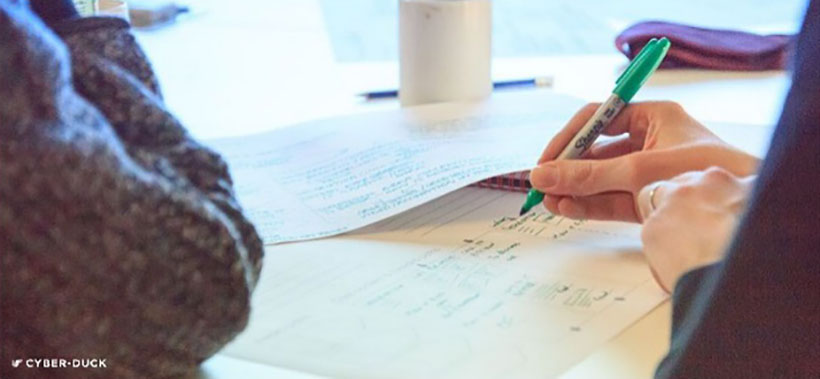
Honesty is crucial to empathy workshops - let loose and you'll enjoy far better results.
The Obituary
The obituary is the final empathy-building workshop I’ll be outlining today. This one is a little more morose, but it’s a great way of meeting your users halfway.
Basically, the obituary exercise is about imagining the demise of your brand or product and how people might react to that. It asks participants to think about how people would remember the brand or product: the good, the bad, and the ugly.
With such deep, candid reflection, you can ensure that your participants think more about their user’s perspective. It will encourage honesty about what’s good and what’s not, the aspects that really stick out. Ultimately, it will get to the ‘why’ of a project – what’s its purpose and what will it achieve?
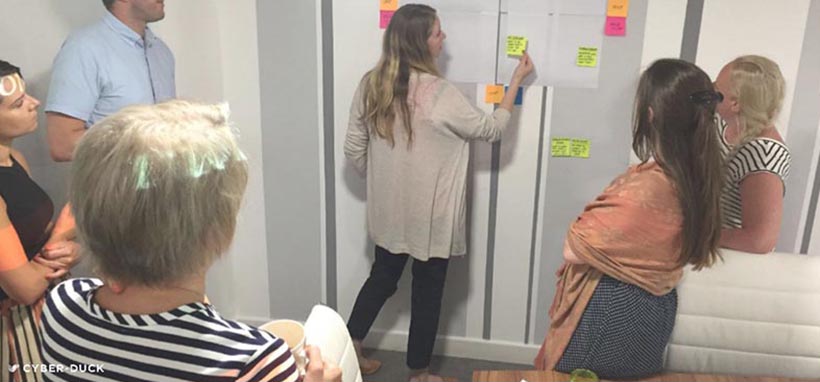
Our client workshops are a crucial part of user-centred design process, and the Obituary is one of the most enjoyable exercises we do!
It’s vital that you’re honest during this exercise, so to do that you should ask and honestly answer among other things:
- What are our biggest accomplishments?
- Who are the people that our product/brand will leave behind?
- What lessons will people take from our product/brand’s life?
- What are the qualities people most admired about us?
All these points pressure your group into reassessing the brand or product from a fresh perspective. This kind of self-assessment can be tough, but the more candid you are the better. It will help you to empathise with your users because you will picture yourself through their eyes.
From here, you can then readjust your brand or product’s development appropriately if you don’t like what you see. Here is the opportunity to empathise with your users and discover if they actually find their journey with you enriching or not – take it!
Any Other Suggestions?
If you have any other workshop ideas that help improve empathy, I’d love to hear them – tweet us @cyberduck_uk with your ideas.
Alternatively, to find out more about our user experience services and how we could help you build more empathic products, contact us today.

